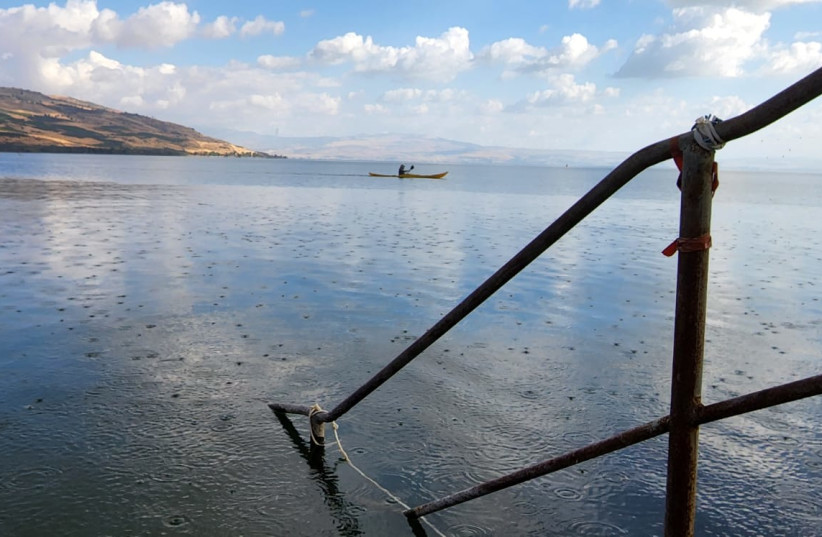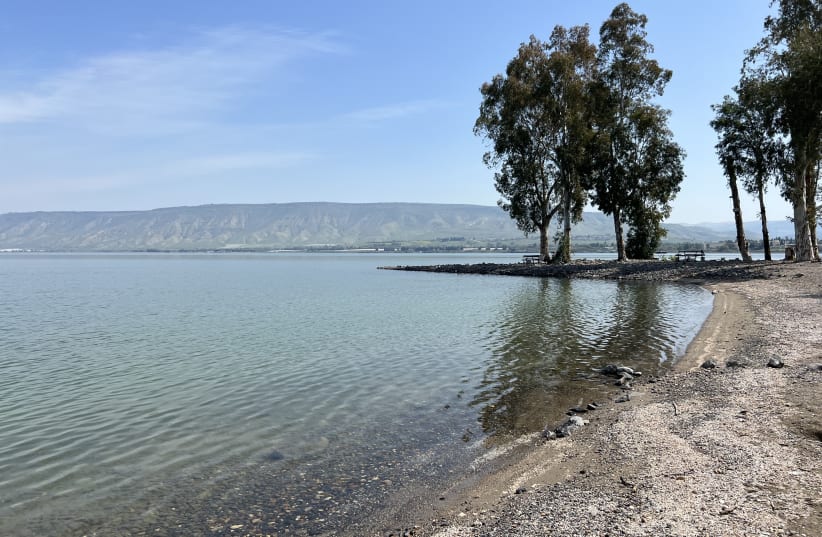A rocket engine, which seems to be an anti-aircraft missile, was pulled out of the Kinneret on Saturday.
The missile piece was found by fishermen at around noon, and they took it out of the water. An Israel Police bomb squad that was called to the scene examined the object and determined that it was not dangerous and there was no concern that it would explode.
According to evaluations, it was part of an anti-aircraft missile that was shot by the Syrian military in an attempt to hit an Israeli plane during the Yom Kippur War or the Six Day War.
This isn't the first time the bomb squad is called because of a discovery of ammunition in the area. In 2018, as the Kinneret got lower, more and more weapons were found. Police assess that as old as the ammo is, it could still be dangerous in some cases.
Old British grenade found in the area in 2018
In October of 2018, the bomb squad was called to the Kinneret area by beachgoers. A person on vacation in the area saw a rusty grenade and called the police. The bomb squad evacuated the old grenade from the scene and blew it up.


Shlomi Biton, a bomb squad member, said at the time that "the signs pointed to it being a British Mills 36 grenade."
The Mills 36 grenade is the first modern spray grenade to be used by the British army. It was developed to suit the climate in the Middle East and was covered in an especially strong substance to protect it from humidity. This may have helped the old grenade stay active even after decades that passed since it was made and all the time it lay at the bottom of the Kinneret.
